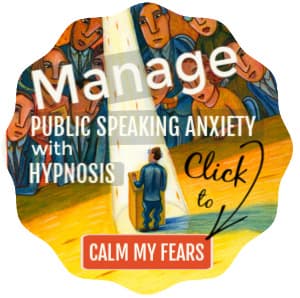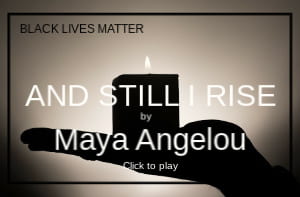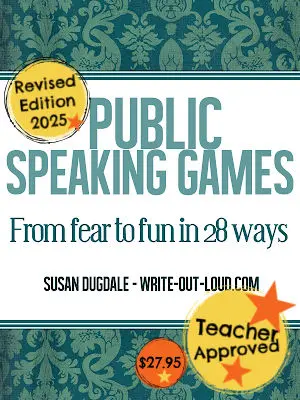- HOME ›
- Writing a persuasive speech ›
- Persuasive speech outline
Persuasive speech outline example
-an outline using Monroe's 5 step Motivated Sequence
By: Susan Dugdale
This persuasive speech outline example uses Monroe's Motivated Sequence (MMS) - a 5 step structural pattern for organizing material focusing on, as its name suggests, motivational appeals.
The sequence forms the basis of many of the successful political, public awareness or advertising campaigns you see and hear around you on a daily basis.
For example: campaigns to raise awareness of health issues: The Heart Truth, NDAFW - National Drugs and Alcohol Facts Week, or STOMP Out Bullying.*
Why is the framework so popular? Because it faithfully follows the psychology of persuasion. In a nutshell, it works. Exceedingly well.
Use the quick links to get around this very long page efficiently. Each of the five steps is fully explained and illustrated in an example speech outline. There's a printable MMS speech outline document for your own use too!
Page quick links

About Monroe's Motivated Sequence

The pattern, or steps, of the sequence mirror those identified as being the
normal thinking processes that occur whenever a person is confronted by a
problem.
Because the steps are perceived as reasonable and logical using them prepares and motivates an audience to respond positively to the speaker's message.
The sequence is named after Dr Alan H Monroe who, after graduating from Northwestern University in 1924, joined the staff at Purdue University (USA) as an Instructor in English. Two years later he became Instructor in Public Speaking and was subsequently promoted to Assistant Professor and head of the speech section of the English department. He retired from the role in 1963.
Overview of Monroe's 5 step motivation sequence
In developing your persuasive speech outline you will follow these 5 steps:
- Attention
Grab the audience's attention - Need
Establish there is a problem (need) demanding their attention - Satisfaction
Outline a solution to the problem - Visualization
Show the audience how they will benefit from your solution - Action
Provide the impetus and means to act
Monroe's five steps in more detail
Now let's examine those steps more closely.
To make the process easier to follow I've prepared a simple example speech illustrating each step and the transitions between them. That's the text in the green boxes.
As you read start thinking about your audience and your topic. Jot any ideas down for later use.
Persuasive speech outline example
About this sample speech - topic, purpose and audience
The subject is fear of public speaking.
The specific purpose of the speech is to persuade and encourage people in the audience to take a course to overcome their fear of public speaking.
The central idea of the speech is that the ability to speak in public opens doors to many opportunities.
The audience is drawn from the local community. They range in age from late teens to forties plus.
The 5 steps of Monroe's motivation sequence
Getting attention - step 1
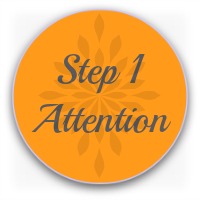
This step is your introductory "listen up" call. To make it effective it needs to grab the audience. It could be any of the following:
- a startling statement
- a rhetorical question
- a quotation
- a funny story
- a dramatic story
- a photograph or other visual aid
Put yourself in the position of your audience when deciding how to hook and hold their attention. Why should they listen to you? How does what you have to say benefit them? Is it relevant to them? How?
Step one - attention
Do you know the real costs of public speaking fear?
The price is high.
Research reveals that a person with public speaking fear is 10% less likely to graduate from college, is likely to receive 10% less in wages and is 15% less likely to take on management or leadership positions.
Who pays? You. Me. Us. Anybody who allows fear to govern their decision making. We pay by sacrificing our potential selves, putting our dreams away and settling for less.
Why?
Establishing credibility
As well as getting their attention you also need to establish your credibility or right to talk on the subject. Your audience needs to know that they can believe what you're telling them. If they feel they can trust your expertise and experience they will be much more likely to follow your lead.
Credibility statement
That’s a question I asked myself a long time ago. As a teacher with many years of experience I saw far too many students who would do anything they could to avoid public speaking. To answer it I researched.
Then I used those answers to devise public speaking programs that were effective and fun.
Transition - the link from step 1 to step 2
Can you imagine the positive impact
feeling OK about speaking up would have? On individuals?
On families? On
our community?
Establish the need - step 2

This step develops the need for change. Now that you have your audience's attention you will clearly show them what the problem is and the extent of it.
To be effective use:
- examples to illustrate how it impacts on them - their happiness, future, health, family, neighborhood...
- statistics - facts, figures, graphs, diagrams...
Remember to cite your sources and remember too that some are more credible than others. You need recognized sources to give your speech the credibility you want. - expert witness testimony - the more authoritative, the better
Your goal at the conclusion of this step is to have your audience eager to hear your solution. They agree with you that there is a problem and want the answer.
Step two – Need
A. According to
frequently cited statistics 75% of people suffer from some degree of
glossophobia - fear of speaking in public.
Source: Hamilton, C. (2008) [2005]. Communicating for Results, a Guide for Business and the Professions (eighth edition)
- At the extreme upper end of this very large group are the people who would literally run a mile rather than speak. For example, they will not apply for promotions if the new position means giving presentations. They will not give a speech at a special family occasion - a wedding, birthday or funeral. Public speaking makes them ill, literally. There maybe quite a few of you here, so you’ll know exactly what I mean.
- At the other end of the scale are the people who have one or two butterflies fluttering around – enough to make them register they’re a little nervous about speaking but it’s nothing to worry about. There’s likely not so many of you here. If you have come along, it’s probably to support someone who needs it! Thank you.
- The majority of us are somewhere in the middle where it’s neither all fine nor all bad. Some days are OK. We manage. And some days it’s definitely not OK. We just hang in there by the skin of our chattering teeth.
B. Bad public speaking experiences often lead to more of the same. History repeats.
- We focus on the criticism we received and interpret it as a criticism of ourselves. Our speech is bad therefore I am bad. This makes a shaky platform to build public speaking skills and confidence on.
- When given a presentation to prepare we procrastinate because we don’t feel confident or competent. That means we don’t put the work in which in turn leads to another bad experience. It becomes a vicious circle.
- When we feel ashamed about ourselves we often close off. We don’t ask for help and it becomes easier to expect less of ourselves and our lives.
- Here's those stats again. According to Franklin Schneier, MD, someone with public speaking fear is likely to receive 10% less in wages, be 10% more likely to drop out of college and be 15% less likely to apply for leadership or management roles.
C. Begins in youth.
- “The fear of public speaking is more common in younger patients as compared to older ones and may be more prevalent in females as compared to males,” says Jeffrey R. Strawn, MD, FAACAP, associate professor of psychiatry and pediatrics and director of the Anxiety Disorders Research Program in the Department of Psychiatry & Behavioral Neuroscience at the University of Cincinnati.
- More than 75% of people experience their first symptoms of Social Anxiety Disorder which often includes fear of public speaking during their childhood or early teenage years - American Psychiatric Association. (2014). Understanding Mental Disorders
- Let’s conduct a quick informal survey to test that– raise your hand if any anxiety you feel about public speaking began when you were young.
Transition - the link between step 2 and step 3
However there is a way to break this pattern of anxiety. It can be
stopped, and everyone who wants to can learn to speak in public
confidently.
Satisfy the need - step 3

Now you outline your answer or solution and show the audience how it will work.
To do this well:
- outline your solution succinctly
- demonstrate how it meets the problem
- use examples to show how effective it is
- support with facts, figures, graphs, diagrams, statistics, testimony...
- if there is known opposition to your solution, acknowledge and counteract showing how your plan overturns it
The ideal outcome of this step is the audience nodding and saying to themselves: "Yes. This is possible, practical and sensible." Your answer satisfies them. It gives them "satisfaction".
Step three - Satisfaction
A. Come along to an introductory course
- It's free, led by experienced teachers and especially designed for people with a history of being nervous about speaking in public.
- Once a week for 4 weeks you'll have 2 hours of practical public speaking training and practice.
- You'll learn tips and tricks to manage your anxiety, to give varying types of presentations, to effectively structure a speech, and to confidently deliver a speech.
B. When people overcome fear of public speaking there are so many things they can do:
- Complete their college education and go on to further study if they wanted to
- Apply for the positions they know would give them greater work satisfaction
- Speak up when they need to about issues concerning themselves, their family and their community
- Inspire
others to follow their
example
C. Exchanging public speaking fear for confidence will help people to:
- Communicate more effectively
- Listen more carefully to others
- Understand the power of the spoken word and what it can achieve
Transition - the link between step 3 and step 4
Can you imagine the positive impact
that would have on people’s lives? Maybe yours?
See the future - step 4
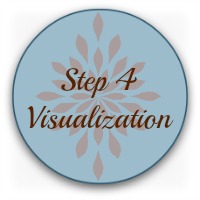
In this step the audience "experiences" the solution. They see (feel, hear, taste...) what will happen if they do as you are suggesting contrasted against what will happen if they don't do as you are suggesting.
This step relies on your use of vivid imagery to portray the outcome of their action, or inaction. They see and feel the pleasure, or pain, in their imagination. To bring it home to your audience the pictures you provide, the stories you tell, need to be relevant and believable.
What you want folk thinking as you conclude this step is: "I can see that this would be good for me."
Step four -Visualization
A. Imagine what society would be like if everyone took full advantage of the educational opportunities that best fitted their interests and abilities. How would that feel?
- There
would be much
less personal
dissatisfaction and social unrest caused by people working in
positions that do not pay
very well or extend their
skills and well being. That
would be much more healthy: physically,
emotionally and mentally, for
everybody.
You could ask for a raise! Apply for that job you always wanted! Give a presentation! Toast your bride! - It would generate a ripple effect. People who speak up confidently and competently encourage others to do likewise. People would feel empowered – free to become the best of themselves - shoulders back, head up, standing tall, looking the world straight in the eye!
B. What disadvantages could there possibly be?
- Perhaps it could uncomfortable for those who have got used to assuming the right to talk for others without consultation. Is that really a bad thing?
- Perhaps it could lead to robust conversations where there are differing opinions over issues? Again, is that a bad thing? It could be an opportunity to polish debating skills.
- There are no real disadvantages! Overcoming public speaking fear is good for everyone. A win-win.
Transition - the link from step 4 to step 5
Let’s do more than imagine
speaking in public freely and competently. Let’s take the steps
towards making it happen.
Take action - step 5

In this last step you present your call to action.
The call to action can be embedded in any combination of the following:
- a summary
- a quotation
- a challenge or appeal
- an example
- a personal statement of intent
To be effective the action step must be readily doable and executed as soon as possible. Make it as easy as you can for your audience. If you want them to sign up for something, have the forms available. If you wish them to lodge a personal protest in writing to your local government have stock letters and envelopes ready. In other words do the leg work for them!
Action steps that are delayed even for 48 hours are less likely to be acted on. We're human - life goes on. Other things intervene and the initial urgency is lost.
Step five – Action
A. (Summary)
Apparently 3/4 of us – 75%, are nervous about public
speaking – often the result of a bad experience when were young.
That has a direct impact on our adult lives. If we allow it to
continue it is likely we will be paid less, fall out of college
without graduating and settle for less-challenging jobs. In short –
live a lesser life. However it doesn’t have to be like that. We
could choose to change. We could become our bigger and best selves.
B. (Call to Immediate Action)
We could, in the famous words of Susan Jeffers, "Feel the fear and do it anyway!"
I’ve got enrollment forms here for that free introductory public speaking course. That’s four two hour sessions over the next four weeks using tried, tested and proven methods of teaching with experienced instructors. You’ll learn how to prepare and deliver speeches. And you'll swap fear for confidence and competence while having fun!
C. (Memorable Close) Who knows what magic may happen once you speak up!
There are 15 places
available. Make one of them yours.
Sources/references
- Rosemary Black. (2018, June 4) Glossophobia (Fear of Public Speaking): Are You Glossophobic? Retrieved from https://www.psycom.net/glossophobia-fear-of-public-speaking
- Franklin Schneier. (2005) Social Anxiety Disorder. Retrieved from:
http://www.columbia.edu/itc/hs/medical/psychmed2/3
_2005/Schneier-SocialAnxietyDisorderBW.pdf - Author and date of publication unknown. Social Anxiety Disorder. Retrieved from:
Social Anxiety Disorder | Mental Health America - Doug Staneart. (2018, March). Podcast 29 - How to Scare the Gooey Out of a Nervous Public Speaker. Retrieved from:
https://www.fearlesspresentations.com/how-to-scare-the-gooey-out-of-a-new-public-speaker/
Fitting the standard speech format
If you are wondering how these 5 steps of Monroe's Motivated Sequence fit into the standard 3 part speech format, they go like this:
- Step 1 (Attention) forms the Introduction.
- Steps 2, 3 and 4 (Need, Satisfaction and Visualization) form the Body.
- Step 5 (Action) is the Conclusion.
Download a persuasive speech outline template
And now download printable blank ready-to-complete Monroe's Motivated Sequence persuasive speech outline template. You'll find the entire 5 step process laid out clearly, ready for you to fill in the gaps.

More persuasive speech resources
A sample persuasive speech

Want to read a persuasive speech example?
This example speech ("After they're gone") follows the sequence outlined on this page.
Before you click through to it you should know the topic is somber; the impact of suicide on family and friends. I wrote it to persuade those in need to seek and accept help and to raise awareness of the issues around suicide.
Persuasive speech topics
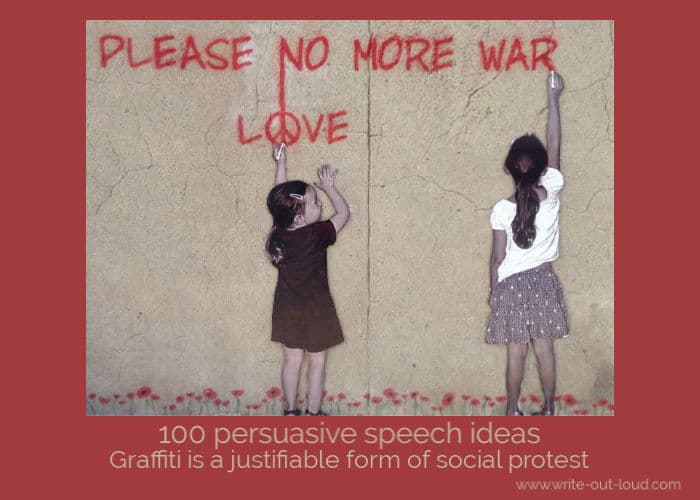
Maybe you haven't found the persuasive speech topic you want yet?
Check these pages:
- 100 great persuasive speech ideas
- 50 good persuasive speech topics
- 205 fun persuasive speech topics
- 309 'easy' persuasive speech topics
Communication coach Alex Lyon explains
If you'd like more on Monroe's Motivated Sequence here's a great video with excellent examples from communication coach Alex Lyons.
And lastly, here's the links to those campaigns I mentioned at the top of the page: The Heart Truth, National Drug and Alcohol Facts Week (NDAFW) and STOMP Out Bullying.

About the Author: Susan Dugdale, founder of write-out-loud.com, is a qualified teacher of English and drama with over 40 years of experience. Drawing on her professional expertise and her personal journey from shyness to confidence, Susan creates practical, real-world resources to help people find their voice and speak with power.

